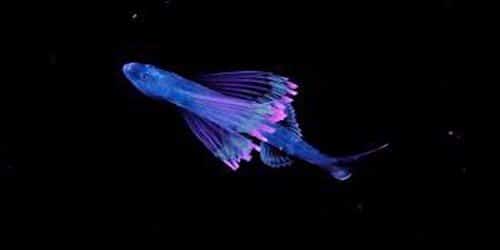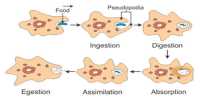Bioluminescence is defined as the emission of light from a living organism that works for its survival or reproduction. It is the result of a “cold” light, a specific biochemical involved in chemical processes, which is often specific to the organism. Bioluminescence is widely found in marine vertebrates and invertebrates, as well as in some fungal microbes, in some bioluminescent bacteria, and in terrestrial arthropods such as fireflies. Bioluminescent organisms occur mostly in marine environments and bioluminescence is one of the major communication systems in the deep sea communication systems. Although less prevalent in the world, observations are naturally more frequent there. In some animals, light is bacteriogenic, produced by symbiotic bacteria of the genus Vibrio; Among others, it is autonomous, which the animal produces itself.
In the general sense, the basic chemical reaction in bioluminescence involves some light-emitting molecule and an enzyme, commonly known as luciferin and luciferase. Bioluminescence can be considered as chemiluminescence which is catalyzed by an enzyme. This light emission from an organism needs to be distinguished from other forms of other luminescence, many biological activities, fluorescence, iridescence, isolation, and so on. Since these are generic names, Luciferin and Luciferres are often distinguished by including the species or group, i.e. Firefly Luciferin. In all characteristic cases, the enzyme catalyzes the oxidation of luciferin.
As larvae, they emit light as a warning signal that they are unpleasant to taste due to the chemicals they produce. Their bioluminescence is related to the enzyme luciferase acting on luciferin in the presence of magnesium ions, ATP, and oxygen. In evolution, luciferins vary slightly: one in particular, qualentragin, is found in eleven different animals (phyla), although in some of these animals take it through their diet. In contrast, luciferase varies widely between species, and as a result, bioluminescence has occurred over more than forty years in evolutionary history. The expression of genes related to bioluminescence in bacteria is regulated by an opioid called Lux operon.
Both Aristotle and Pliny the Elder noted that damp wood sometimes illuminated, and many centuries later Robert Boyle showed that both wood and glow-worm involved oxygen in the process. For the past several hundred years, many scientists have been involved in the collection and classification of bioluminescent organisms. Indeed, even before this, Aristotle (350 BCE) probably first made regular observations of the first luminescent species, and later, Pliny the Elder (23-79 AD) published a complete and detailed description of the enlightened creature. The use of organic matter by animals includes counter-illumination camouflage, imitation of other animals, for example, to lure prey and signal to other persons of the same species, such as to attract a mate. Most marine light-emission is included in the blue and green light spectrum, and wavelengths can easily pass through ocean water. Other researchers are investigating the possibility of using bioluminescent systems in the street and decorative lighting and a bioluminescent plant have been created. However, some loose-jawed fish emit red and infrared light.













